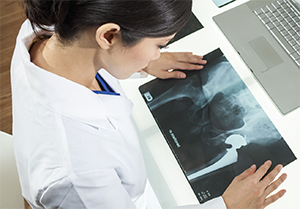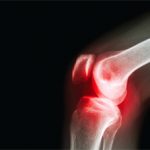
Spotmatik Ltd/shutterstock.com
WASHINGTON, D.C.—What do treating hand osteoarthritis (OA) in the primary care setting, high financial strain and risk of depression in patients with lupus, prolonged sitting and cardiovascular disease, and sex-specific treatment after total hip arthroplasty have in common? They were all topics presented during a session titled ARHP I: Exemplary Abstracts at the 2016 ACR/ARHP Annual Meeting.
Treating Hand OA in Primary Care
Nina Brodin, PT, PhD, a lecturer in the division of physiotherapy in the Department of Neurobiology Care Sciences and Society at the Karolinska Institutet in Stockholm, Sweden, opened the session describing the results of a six-week structured hand OA program delivered in a primary care setting showing that combining education and exercise is a useful intervention in this setting.
The study included 49 patients with symptomatic or radiologically verified hand OA who participated in a six-week program that consisted of two initial educational sessions describing joint health/changes and the importance of exercise followed by six weeks of exercise tailored to individual goals. The exercise component included twice weekly sessions that included an initial 20 minutes of heat therapy followed by 25 minutes of general training. Occupational therapists and physiotherapists trained in the Swedish Better Care for Patients with Osteoarthritis (BOA) concept delivered the program.
The study found that participation in the program led to lower levels of activity limitation, improved grip ability, grip strength, and range of motion of the hand, and that the effect was sustained after one year. These findings, said Dr. Brodin, suggest that patients with hand OA benefit from education and exercise not only directly by improved function and mobility, but also over the long term.
Depression Risk in Lupus Patients: High Financial Strain
Natalie McCormick, PhD candidate, The University of British Columbia, Vancouver, Canada, presented the findings of a longitudinal study that assessed the predictive value of several socioeconomic measures on new-onset depression in a community-based sample of women with systemic lupus erythematosus (SLE). Of the multiple socioeconomic measures assessed, including poverty, education level, household income and financial strain, high financial strain was the only independent predictor of new-onset depression in this cohort of women.
“None of our conventional measures of low socioeconomic status (lower educational attainment, low household income, or living in poverty) were independent predictors of new-onset depression over a one-year period,” said Ms. McCormick. “However, having a high level of current or anticipated financial strain did increase the risk, by nearly two times, even after adjusting for disease activity, baseline depressive symptoms and other disease and socioeconomic factors.”
In the study, Ms. McCormick and colleagues conducted annual telephone interviews with 682 women with SLE from clinical and community sources recruited to participate in the study. Women were asked questions pertaining to poverty (household income above or below 125% of poverty level), educational attainment, household income (less than $40,000, $40,000–80,000, more than $80,000) and financial strain. Questions regarding financial strain included asking about current and anticipated hardships, such as inadequate housing, food or medical attention.
The majority of the women in the study were white (61%), followed by Asian-American (12%), African-American (11%), Hispanic/Latino (10%) and other (7%). The mean age was 51 years, 45% had a college education and 13% were living in poverty. A total of 161 women (24%) reported depression, representing an incidence rate of 8.8 per 100 person-years.
Along with high financial strain, moderate financial strain was also associated with an elevated (although statistically nonsignificant) risk of depression, said Ms. McCormick.
Emphasizing that depression is common in patients with SLE and highly treatable, Ms. McCormick said the findings of the study provide “additional incentive for routine screening for depression in all SLE patients.”
Sitting & Long-Term Cardiovascular Risk
“Promoting the message ‘sit less, move more’ may help reduce long-term risk of cardiovascular disease among people living with rheumatoid arthritis,” said Sally Fenton, PhD, research fellow, School of Sport, Exercise and Rehabilitation, University of Birmingham, United Kingdom.
Dr. Fenton said this is the key message of a study she and colleagues conducted to look at the association between patterns of sedentary behavior and light physical activity on cardiovascular risk among people with rheumatoid arthritis (RA). The cross-sectional study included baseline data from 98 patients with RA who were taking part in the Physical Activity in Rheumatoid Arthritis (PARA) study. Patients first underwent clinical assessment to measure individual cardiovascular risk factors. Patients then wore a GT3X accelerometer on their right hip for seven days to assess their daily sedentary behavior patterns.
Of these patients, 61 (62%) wore the device at least 10 hours on four or more days and were included in the analysis. Most patients were female (67%), with a mean age of 55 years and a mean duration of RA of seven years.
After adjusting for age, gender and accelerometer wear time, the study found that variability in levels of engagement in sedentary behavior and light physical activity are relevant to long-term cardiovascular risk in patients with RA. Patients with higher levels of sedentary behavior had a higher risk of developing cardiovascular disease over the next 10 years, whereas patients with higher levels of light physical activity had a lower risk. The study also found that prolonged periods of sitting for 20 minutes or more may be particularly detrimental to cardiovascular health, according to Dr. Fenton.
To illustrate the meaning of these findings, Dr. Fenton said that “reducing sedentary behavior by around one hour per day and replacing it with light physical activity may contribute to around a 6% reduction in long-term risk of cardiovascular disease.”
Sex-Specific Treatment after Total Hip Arthroplasty
If early results hold up with further study, rehabilitation after total hip arthroplasty (THA) tailored specifically to the sex of the patient may offer improved clinical outcomes. In particular, preliminary evidence from a study presented by J. Heather Brunner, graduate student, Physical Therapy, University of Illinois at Chicago, suggests that clinical outcomes in women may be improved by focusing more on hip abductor rehabilitation.
The study included 124 patients, 64 of whom were female, who underwent rehabilitation after THA. Ms. Brunner presented a secondary analysis of this patient cohort aimed at testing the hypothesis that abductor strength and pain or function would differ by sex in patients who undergo rehabilitation after THA. To test this hypothesis, investigators analyzed clinical outcomes separately for men and women based on assessment of hip abductor strength and function and pain scores around one year after THA.
The study found no association between improved function and gait or strength in men. However, in women, the study found a significant relationship between improved function and increased hip range of motion, peak adduction and external rotation moments, and abductor strength. The study also found that improvements in pain differed between men and women, with increased range of motion and decreased peak adduction moment related to pain reduction in men, whereas pain reduction in women was associated with increased external rotation moment.
“Research suggests that women are at higher risk for poorer clinical outcomes after total hip arthroplasty, but we do not yet know how to improve these outcomes,” said Kharma C. Foucher, MD, PhD, assistant professor, Department of Kinesiology and Nutrition, University of Illinois at Chicago, and advisor to Ms. Brunner. “The main finding of our study was that we found that women who had the most gains in both abductor strength and the most improvements in gait mechanics after total hip arthroplasty also had the most functional improvement.”
Mary Beth Nierengarten is a freelance medical journalist based in Minneapolis.

